
Andrew Verticchio
gamer level 5
3869 xp
3869 xp
followers
24
24
Use my invite URL to register (this will give me kudos)
https://boardgaming.com/register/?invited_by=doctordhgames
profile badges




recent achievements

I Walk the Talk!
Claim that you have played a game today by clicking the "Played Today!" button on a game page 100 times.
Claim that you have played a game today by clicking the "Played Today!" button on a game page 100 times.

Gamer - Level 5
Earn Gamer XP to level up!
Earn Gamer XP to level up!

I Got What I Wanted
Add a game to your Owned list that was previously in your Wish list.
Add a game to your Owned list that was previously in your Wish list.

Judge - Level 1
You be the judge! Demo a game at Gen Con. List of participating publishers »
You be the judge! Demo a game at Gen Con. List of participating publishers »
Player Stats
Critic (lvl 1)
170 xp
170 xp
Explorer (lvl 2)
541 xp
541 xp
Professor (lvl 2)
527 xp
527 xp
Reporter (lvl 1)
197 xp
197 xp
About Me
I currently run a board, card, and miniatures games blog called Cardboard Mountain. The focus is only original reviews and industry news. I'd love it for you all to take a look and let me know what you think!

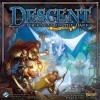






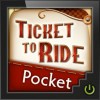




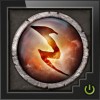









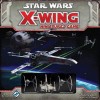



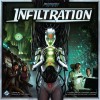




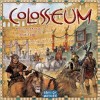




![Go to the Level 7 [escape] page Go to the Level 7 [escape] page](https://boardgaming.com/wp-content/uploads/2012/08/Level-7-escape-100x100.jpg)


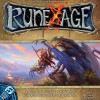





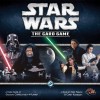





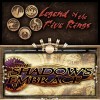


Axis & Allies 1942
Axis & Allies Spring 1942 (A&A 1942) is the newest edition of Avalon Hill’s venerable World War II board game. Axis & Allies has gone through several revisions since its inception and the 1942 version hopes to present the most optimized and streamlined version to date.
So, is 1942 the best version yet? Or is it the same game with a new coat of paint? We shall see if investing in a new version of A&A is Worth It.
What You Get:
Axis & Allies 1942 encompassed the scale of World War II in its entirety so you get five nations to command; Germany, Japan, USA, UK, and USSR. There are 370 game pieces included to represent the various units of each nation. There is also a new version of the game board which features some fantastic new art. There are also mini set-up cards with the locations for the starting armies, a new combat strip, control tokens, a handful of dice, and a rulebook.
Playing the Game:
1942 plays like all other versions of Axis & Allies. If you have played any version before, you will right at home. Set up,combat, and the object of the game remain the same from A&A Revised. The game plays the same as its predecessors with just small rules tweeks and a few changes to the units.
The object of the game is to capture a set amount of Victory Cities. Each side starts the game with six VCs. The game is played in a series of rounds. In each round, each faction gets to take a turn. During your turn you train (purchase) new units, make combat moves, resolves combat, make non-combat moves, and place your newly trained units. Gameplay, at its core, is simple. But players can get bogged down in all the moves to make and battles to fight. The game continues until one side has captured enough VCs to claim victory.
Axis & Allies is the master of historical board games and is best played in two teams of two. Having a teammate to discuss strategy makes a big difference. Commanding the entirety of the Axis or Allies solo is a monumental task.
What Changed:
No Research – They got rid of Research. Really? The ability to research awesome new powers for your units was great and rolling that Research Die was often one of the most tense moments in the game. Except for Heavy Bombers. Everybody knows that Heavy Bombers broke the game and everybody house ruled that no Heavy Bombers could be researched. But to get rid of it all together? C’mon. Purchasing a Research Die was part of what made A&A so much fun.
Submarines Defend on a 1 – Another gripe with the new rules. Subs used to defend on a 2, respectable, not overpowered. Now, it’s a 1. Sure, they lowered the cost but who wants to buy subs when they cannot defend themselves. And considering how little Destroyers cost, there is no reason to waste money on an Attack 2, Defend 1 unit.
Transports Cannot Defend Themselves – This is strictly personal preference but the removal of Transport Ships ability to defend themselves is annoying. I completely understand that as a transport ship it is not designed to fight in naval battles but it takes away one the moments that made Axis & Allies so great…the ability for a lowly Transport to strike back at an overwhelming enemy force. It is a classic A&A scenario, the lone Transport attempting to run the blockage and it attacked by a huge naval force. But will the transport go down quietly, of course not! They get to roll a single die and will take an enemy ship down to Dave Jones’ locker with them! But not anymore. Now transports just die if a hostile plane or ship moves into the same zone. More realistic, sure. More fun,* no.
The Combat Strip – Instead of using the large, space consuming Combat Card we have a minimal Combat Strip. It is a great update to the game. It has all the information you need printed right on it and you no longer have to worry about where to find space for the battles.
Strategic Bombing Raids – The rules for Strategic Bombing have changed quite a bit and they may be the only rule change that makes sense. Instead of forcing your opponent to discard IPCs they Industrial Complex itself takes damage. That damage can be removed at the cost of one IPC per point of damage. If the damage reaches certain thresholds then the player cannot built any units until the Industrial Complex is repaired. This rule change brings more balance to Strategic Bombing and adds an interesting element to the game.
The Good:
The Game Board – It is a work of art. Each new version of A&A has featured a new and improved game board and this version takes the cake. The territories are wonderfully detailed and the addition of the ice caps across the top of the board is a cool way to make the edge of the map.
Built In IPC Chart – The game board now has the IPC chart built in. You no longer have to keep track of the money on a separate board which helps cut down on table clutter. This is just another reason to love the new game board.
New Model Sculpts – Axis and Allies has always entranced me with its detailed game pieces. 1942 sets the new standard for historical board game miniatures. Each nation now has historically accurate models for each unit that are cool and easy to recognize. There is also the addition of a new naval unit, Cruisers, which add more depth to the sea battles.
The Bad:
No IPCs – Collecting and spending ICPs is a huge part of Axis & Allies, it’s the money of the game after all. Often the best player is the one who makes the best use of their precious IPCs. So why does this version not include a single IPC? The rulebook instructs you to just use a piece of paper to keep track of your money. Yeah, I don’t think so. We used the IPC’s from the previous version of the game. Of course, you could also use Monopoly Money…
No Victory City Tracker – Like I mentioned before, the object of the game is to capture a set amount of victory cities. So it would make sense if there was some kind of score card or tracker to use a quick reference to see how many VCs are controlled by each team. Makes sense right? That is why there is a VC Tracker in Axis & Allies Revised, so players know who is winning. So why is there no tracker in this version? Beats me. Of course, A&A 1942 also did not include IPCs so, I shouldn’t be all that surprised.
No Unit Reference Cards – Another item that A&A 1942 lacks. All previous versions of the game included wonderful reference cards that had all the information a player needed regarding the cost, the stats, and the abilities of each individual unit. This made sense because each unit on the table is different. There are tanks, fighters, bombers, infantry, artillery, cruisers, battleships, and many others. I do not have the stats memorized and i think it is unfair for a game to expect you to have the stats for each unit memorized but that is what 1942 wants the player to do. This is just another item that was stripped away from 1942 that creates a frustrating experience.
Not Enough Tokens – Just another component that 1942 lacks. There are barely enough tokens to finish basic set up and we constantly had to clutter the board with more unit models because we ran out of unit tokens. This could have been easily fixed but instead the game shipped with too few components.
Worth It?
Not at all. I figured that Axis & Allies Spring 1942 would be an improvement from A&A Revised, it’s not. Not even close. This version simply lacks the features needed for an enjoyable game experience. There is nothing to represent the game’s currency, there is no method to quickly track victory, there no convenient way to look up unit stats, there are barely enough tokens to set up the game. I constantly felt like I was playing an incomplete game. Before we had even finished setting up the game we broke open a copy of Axis & Allies Revised and grabbed the IPCs, the Victory Tracker, and unit tokens to use while we played. Here is my advice, use the board and the units from 1942 and everything else from Revised. That way you can have a complete, fun, game of Axis & Allies.
Not Worth It
Check out the full review on Cardboard Mountain: http://thecardboardmountain.blogspot.com/2012/09/board-game-review-axis-allies-spring.html